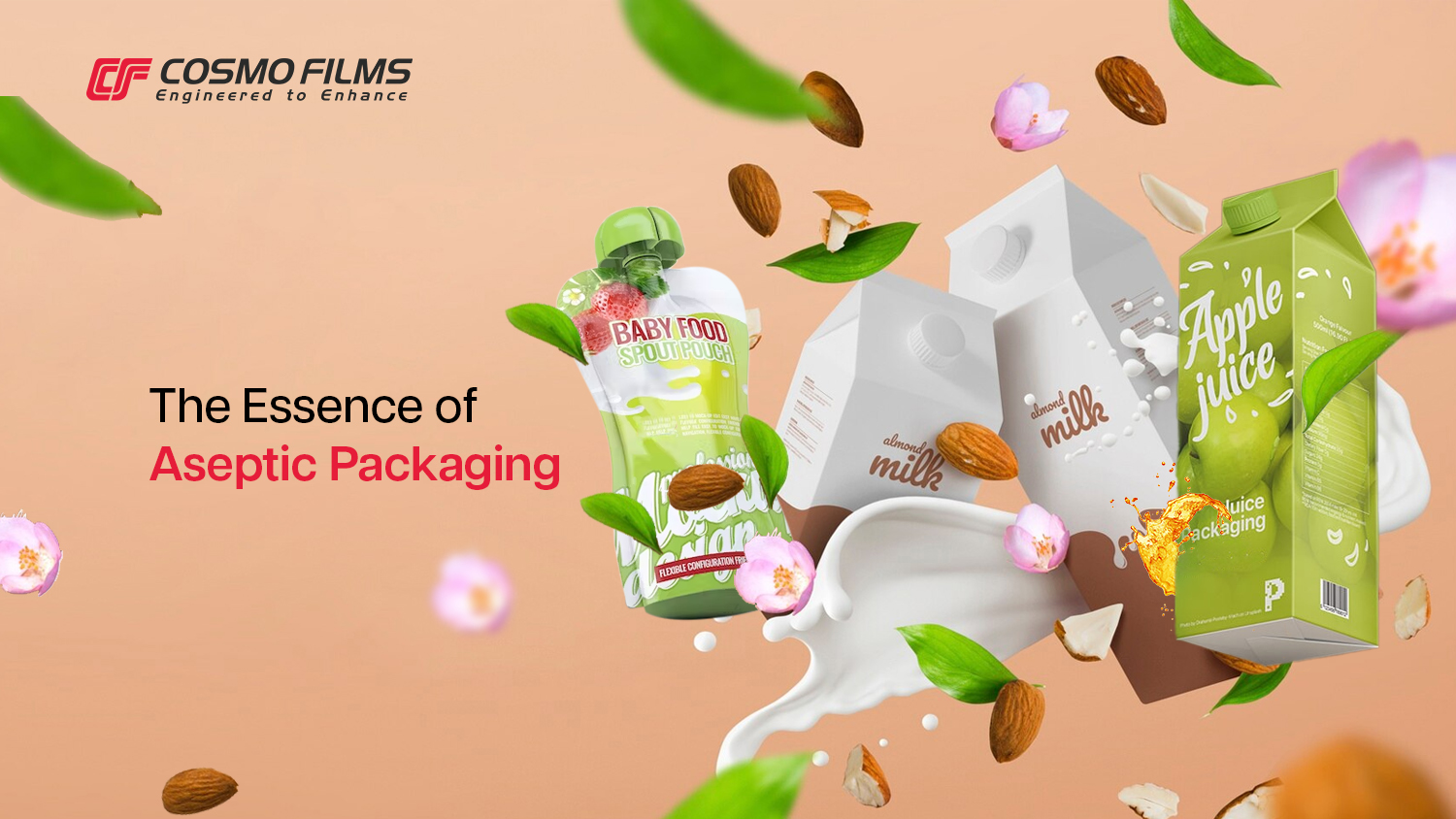In an era where environmental consciousness is at its peak, the packaging industry is undergoing a transformative journey toward sustainability. Among the frontrunners in this green revolution is aseptic liquid packaging—a process that not only preserves the freshness and flavor of liquid products but is also adapting to align with eco-friendly values. Explore with us the nuances of aseptic packaging, and shine a spotlight on the strides made by aseptic packaging companies in India in embracing sustainability.
The Essence of Aseptic Packaging
Before we dive into the sustainability aspect, let's unravel the core of aseptic packaging. Aseptic packaging is a technique designed to maintain the sterility of a product, ensuring it remains free from contaminants throughout its shelf life. This is achieved by sterilizing both the packaging material and the product separately and then combining them under sterile conditions.
The benefits of aseptic packaging are manifold. It extends the shelf life of perishable goods, reduces the need for preservatives, and preserves the nutritional value and flavor of the contents. From juices to dairy products, aseptic packaging has become the go-to solution for brands aiming to deliver fresh, safe, and long-lasting liquid products to consumers.
How is aseptic packaging causing a green revolution?
Aseptic liquid packaging takes the principles of aseptic packaging and applies them specifically to liquids. It's the reason your favorite juice boxes and cartons can sit on the shelf for months without the need for refrigeration. However, the evolution of aseptic liquid packaging goes beyond mere functionality—it's now about sustainability.
As consumers increasingly scrutinize the environmental impact of the products they purchase, the aseptic liquid packaging industry is responding with a commitment to green practices. This includes reevaluating packaging materials, optimizing production processes, and embracing eco-friendly innovations.
Sustainability in Aseptic Packaging: Current Trends

1.
Eco-Friendly Materials: A significant trend in aseptic liquid packaging is the shift towards
eco-friendly materials. Traditional packaging materials, such as aluminum and plastics, are being reconsidered in favor of more sustainable alternatives. Companies are exploring plant-based materials, recycled content, and biodegradable options to reduce their carbon footprint.
2. Reduced Packaging Waste: Aseptic packaging inherently minimizes the need for preservatives, but the sustainability drive goes further by addressing packaging waste. Brands are opting for minimalist designs, lightweight materials, and efficient packaging structures to reduce the environmental impact of their products from production to disposal.
3. Recyclability and Circular Economy: A circular economy approach is gaining traction in aseptic liquid packaging. Brands are not only focusing on making their packaging materials recyclable but also actively participating in creating a closed-loop system. This involves collaborating with recycling facilities and advocating for consumer recycling initiatives.
4.
Energy Efficiency:
Sustainability in aseptic liquid packaging extends beyond materials and design. Companies are investing in energy-efficient manufacturing processes, incorporating renewable energy sources, and optimizing transportation logistics to reduce their overall energy consumption and carbon emissions.
Aseptic Liquid Packaging Companies in India
In the dynamic landscape of sustainability, Indian aseptic liquid packaging companies are emerging as trailblazers. As the demand for aseptic packaging grows in the Indian market, companies are recognizing the need to balance innovation with environmental responsibility. Let's take a closer look at how these companies are contributing to the green wave.
Cosmo Films, a leading player in the packaging industry, has been at the forefront of sustainable aseptic liquid packaging. They understand that the future lies in merging functionality with a commitment to the planet. Cosmo Films offers
eco-friendly packaging solutions that cater specifically to the aseptic liquid packaging sector.
From
recyclable films to lightweight materials that reduce transportation emissions, Cosmo Films is dedicated to providing sustainable options without compromising on the efficiency and sterility required in aseptic packaging. Their approach aligns with the growing consumer demand for products that not only meet quality standards but also reflect a brand's dedication to environmental stewardship.
The Future of Sustainability in Aseptic Liquid Packaging
As we look ahead, the future of sustainability in aseptic liquid packaging is promising. The trends we see today are likely to evolve, driven by technological advancements, consumer expectations, and a collective industry commitment to nurturing the planet. Here are some key aspects that may shape the future landscape:
Innovative Materials: Expect a continued exploration of innovative and sustainable materials. The industry may witness the rise of materials that not only maintain the sterility of the product but also break new ground in terms of environmental friendliness.
Smart Packaging Solutions: The integration of smart
packaging technologies is on the horizon. This could involve packaging that communicates with consumers about the freshness of the product, optimal consumption times, and even provides information on proper recycling.
Global Collaboration: Sustainability is a global challenge that requires a collaborative approach. Aseptic liquid packaging companies may engage in cross-industry and cross-border collaborations to share best practices, optimize supply chains, and collectively address environmental concerns.
Regulatory Support: Governments and regulatory bodies may play a pivotal role in shaping the future of sustainable aseptic liquid packaging. Incentives, regulations, and policies that encourage environmentally friendly practices could further accelerate the industry's green evolution.
The journey from traditional packaging to sustainable aseptic liquid packaging represents a profound shift in the values and priorities of the industry. As consumers become more conscious of their environmental impact, aseptic packaging companies, including those in India like Cosmo Films, are rising to the challenge.
Sustainability in aseptic liquid packaging is not just a trend; it's a responsibility. It's about safeguarding the freshness of products while also safeguarding the future of our planet. With continuous innovation, a commitment to eco-friendly practices, and a collaborative spirit, the aseptic liquid packaging industry is well-positioned to foster a greener, more sustainable tomorrow. It's not just packaging; it's a pledge to nurture both the products within and the world we all call home.
